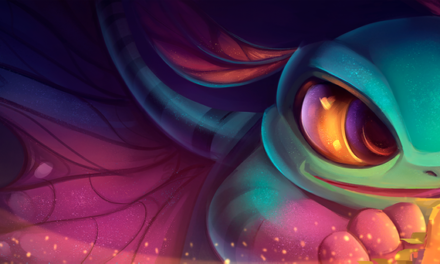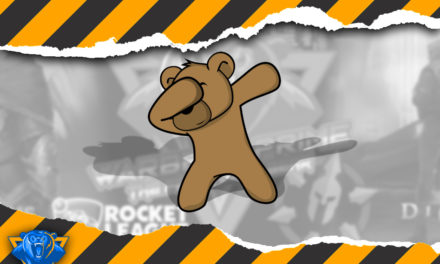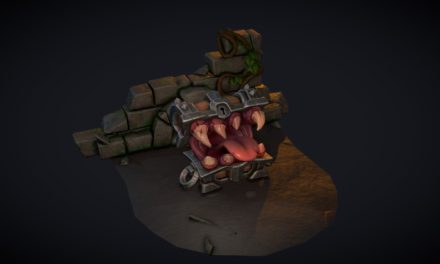Alignments are subjective, and are how they interact with D&D has many people seeing them differently, and so as such in how they act. Others (like me) use it more as an abstract tool for narration, and as a record of the overall philosophy of the character. In this article I am going to explore how I use alignments, and then for each one comment both on how it works, and with some examples of the kind of character you could use for inspiration for each alignment.
Alignments Historically in D&D
In D&D, as a system tool, alignments are treated as an actual force of nature, the alignments can harm and impede just by being there. Weapons treated as having an alignment would either not work for some, or actually harm others just by touching the item. A Paladin in 2nd Edition however could not detect evil, as a force, but more as an ‘intent’ to do evil. As a force in the world it holds power. Do too many things wrong, and your alignment shifts, and bang you suffer all kinds of things being lost. Yet only because the alignment had a power, did this change have an effect.
When I started gaming, when alignments were less abstract, but actually there, it actually detracted from the game somewhat, as we more or less tried to just stay our alignment, rather than concentrating on the story. I think this alone is the main reason I shifted my thoughts on how alignment should work in D&D. As a result, below you will find how I break up each of the different alignment components, detailing things about them with some examples of how it works IRL as well as in game.
The Alignment Breakdowns
Here is where I am going to breakdown the different elements that make up the nine alignments we know, focusing on how each one is alone, and then lastly how they work with other alignments. As I said, I use it as an abstract, not a force, so read on with that in mind.
 Lawful
Lawful
Being lawful, or partially lawful is the result of adherence to a code. What that code is is up to the player, and will be one that aligns to the other half of the character’s alignment. Good examples of this kind of character are Knights, Paladins, Monks, Clerics who could be following the laws of the church, of the state, of a god, of a code of conduct as a knight or as the orders of a monk of a specific monastery.
Good
Good aligned characters are interested more in doing well for others over themselves. While they won’t shy from being rewarded, they would also see some of their effort go into making the world a better place to be in. Good aligned characters follow the other half of their nature to see HOW they do this. Good examples of this are Robin Hood type characters, those that risk themselves to help others, Paladins serving the people, the crown a god or whom ever.
Evil
Evil characters aren’t stupid. CE is not a license to go stupidly killing everyone. Evil is, as an abstract, a thought process of self over others. The evil character does something so that they gain what they are after, be it power, money or anything. The combined other half of the alignments for evil determines, just like good (above), the HOW of their methods of doing this. Good examples, the Sheriff of Nottingham, or Prince John and Gollum are different examples of evil, where their desires led them to do things others would not, because self over others.
 Chaotic
Chaotic
The chaotic element of an alignment measures the lengths that a person will go to achieve their goals. Chaotic people will do almost anything, and it might even look counter productive, or random, but they do what ever it takes to achieve their goals.
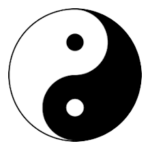 Neutral
Neutral
Neutrality is probably one of the easiest, and hardest alignment elements. Because it’s hard to be neutral, everybody has a side they like to take, and while SOME have the ability to remain neutral, most of us don’t. Neutrality is someone who sees balance and fairness. If the group is getting paid, the neutrally aligned character would want the split to be even. If the party is on an adventure, they are the voice of reason, or the devil’s advocate. Looking at both sides of things, or all sides, evenly, and coming up with something in the middle. Lawyers are good for this, judges, guards, and such. Druids lean to this alignment because of the balance it offers, and Druids are all about the balance in life.
Alignment Combinations
In this section, I am going to make the nine alignments up, and show you examples of how both they would be suitable for class / roleplaying wise; and also some examples of how they could be used effectively.
The Good Alignments
Lawful Good
Lawful good alignments are shunned by a lot of players because they think they are stuffy uptight taddle tales. Well the truth is they are so much more. Lawful good aligned people are those that serve a cause, or country or religion with strong ideals of helping others out. That does not mean they can’t have (and be) fun. A lawful good paladin, who is a member of an order of knights, from a small sect of Torm. They could not only be fun, but funny, where they often crack jokes, good or bad, and tell funny stories, or play a musical instrument, or anything really. The alignment doesn’t define the character it records it. If the paladin kept to his code, then he would stay as Lawful good. But if he strays from the code, he might lost the alignment but so long as he still serves good, why should his god punish him? His order might have something to say though, but that’s some quests for another time.
 Good Examples:
Good Examples:
- Captain America
- King Arthur (Classic versions)
- Knights of the Round Table (for the most part)
- Jean Luc Picard (Star Trek)
- Optimus Prime
- Robocop (till he went a bit chaotic anyway)
- Spock (Movies and TV)
- Odo (Star Trek DS9)
- Ned Stark (GoT)
- John Snow (GoT)
- Superman
- Wonder Woman
- Aragorn
Chaotic Good
Chaotic does not mean nuts. Chaotic means diversity in thought. A lawful person follows a strict code, a chaotic person is the direct opposite; they follow no code and so are more free to be liberal in what they think will work, so long as nobody else gets harmed, and where possible where the greatest good is done. There are historically through history and television good examples of what counts as chaotic good.
 Good Examples:
Good Examples:
- Robin Hood (and most of his band of merry men)
- Daredevil
- Spiderman
- Iron Man / Tony Stark
- Quicksilver
- The Hobbits
- Legolas
- R2-D2
 Neutral Good
Neutral Good
Remembering that Paladins don’t HAVE to be lawful good in 5e. While they did previously, the story is changed for 5e. See sidebar quote from PHB (Pg 83). Here are some good examples of a neutral good characters:
Good Examples:
- Luke Skywalker
- Captain Kirk
- Will Turner (PotC)
- Aragorn
- Wash (Firefly)
- Kaylee Frey (Firefly)
- Cpt. Lee “Apollo” Adama (Battlestar Galactica)
- Shepherd Book (Firefly)
- Simon (Firefly)
- Teal’c (Stargate TV)
The Evil Alignments
 Lawful Evil
Lawful Evil
Lawful evil are those that follow a code, even a good one, and make it work for them. Lawyers are the most readily identified members of this group. Let’s face it, who’s better at manipulating laws to get what they want, either for them or their client(s). Nobody right? Politicians fall into this as well as far as I am concerned. They use the laws to get what they want, and while yes there are some out there who are good, by a vast majority they are alone.
Because lawful evil characters do use the rules, they also know not to break them. They can follow their own rules (an assassin who won’t kill women or children for example). They can follow the laws of a chruch or other group, and use the rules to rise in rank and power. Some might have a theory of never let a sucker go away richer than you.
 Good Examples
Good Examples
- Lawyers
- Black knights
- Lex Luthor
- Emperor Palpatine
- Darth Vader
- Saruman
- Grima Wormtongue
- Cersei Lannister (GoT)
- Vincent Vega (Pulp Fiction)
- Jules Winnfield (Pulp Fiction)
- Vaako (Chronicles of Riddick)
 Chaotic Evil
Chaotic Evil
Okay, brace your self, CE as an alignment is NOT a ticket to go murder hobo. Let’s take the breakdowns and mix them, Chaotic (will do anything) Evil (for self); so CE is an alignment that will let you do ANYTHING your character can in the game, so long as you are gaining from it in one way or another. Now that MIGHT mean that now and then, someone might do that, it doesn’t mean they ALL do. I call this the Narcissistic Selfish Bastard alignment. Because everyone who plays this should be playing someone with a goal, and someone not too fussy about HOW they get there. But in a role playing perspective, if they murder someone in game, and get caught, then they should find punishment fitting the crime(s). Remember to make consequence part of your game style.
 Good Examples
Good Examples
- Kylo Ren
- The Joker (Batman series+)
- The Crimson King (The Dark Tower series by Stephen King)
- Freddy Kreuger
- Chucky (Child’s Play)
- Smaug
- Carnage (Spiderman comics)
- Joffrey Baratheon (Got)
- Ramsay Bolton (Got)
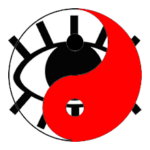 Neutral Evil
Neutral Evil
A neutral evil person can be best summed up in three words: Right Royal Bastard. NE characters don’t care who they hurt, and while not chaotic like above, and can be more deliberate in their actions. They do what they want for their own ends.
 Good Examples
Good Examples
- Davy Jones (PotC)
- Col Landa (aka “The Jew Hunter” from Inglorious Basterds)
- Biff Tannen (Back to the Future)
- The Plague (Hackers)
- Two Face (Batman)
- Doctor Smith (Lost in Space)
- The Master (Doctor Who)
- Most of the Goa’uld (Stargate TV Series)
- Blackadder (Blackadder TV Series)
The Neutral Alignments
 Lawful Neutral
Lawful Neutral
Lawful neutral characters are more in mind of following laws, or rules of some sort, because while they not be the best, they are even or fair in how everyone is treated. Their neutrality and even handedness, and the following of codes, makes it a good alignment, like all neutral based alignments, for druids. But any other class would fit that, including paladins. A knight or paladin that follows a code, no matter what, even if the code is good or bad, so long as it’s evenly or fairly handled.
Good Examples
- Lawyers (good ones)
- Judges (good ones)
- Judge Dredd
- Cops
- Death
- The Borg{ST}
- Zoe (Firefly)
- The Ancients (Stargate Series)
- Batman
- The Accountant (Drive Angry)
- The Accountant (The Accountant)
- James Bond
- The Borg (ST:TNG)
 Chaotic Neutral
Chaotic Neutral
AH, I hear you, “The madman’s alignment”, YAY! NO. Anyone can be crazy, the CN alignment though is usually the one taken for a mad man. These characters are spontaneous, doing things on a whim, or not doing things for the same reason. Others might have loose plans, but wing every part of it. CN as an alignment is (like CE) not a license of any sort. In this case it’s not to be insane every time. You can be sane, and spontaneous.
 Good Examples
Good Examples
- God (Alanis Morissette, Dogma)
- Stephen (the “My Ireland”, Braveheart)
- Marv (Sin City)
- Captain Jack Sparrow(PotC)
- River Tam (Firefly)
- Conan
- Elric of Melnibone
- Q (of ST:TNG)
- Venom (Spiderman comics)
- Quark (ST:DS9)
- Vala Mal Doran (Stargate SG1)
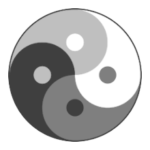 True Neutral
True Neutral
This is the hardest, and not just by a little way, but by a long way. Like I said in the introduction, we all take sides on most things. Those stands are what defines your alignment, but how do you handle an alignment that has two loads of neutrality combined? This is what makes it the hardest (IMO) of alignments. But in a lot of ways it’s as liberating as the others. The neutral alignment is one for those who like to see a balance maintained. These are people who go with the flow. They don’t try to rock the boat, they just see where life takes them. But they also won’t stand to see the strong overpower the weak, unless it’s natural to do so.
 Good Examples
Good Examples
- Boba Fett
- ‘Snake’ Plissken (Escape from New York/LA) (CN tendencies)
- The Vulcans (ST:All)
- The Replicators (Stargate)
Conclusion
SO, how to wrap this all up. Well the first thing to remember as you get to this point, is that this is MY opinion, and this is how I run MY games. I encourage everyone to find whatever works, and if this does for you then awesome. If not, hopefully you took something away to think about.
I have played many games in the years I have been playing, and many different takes on alignments and how they worked. The main two I cover lightly in this article, where we need to only know the concept, not in depth knowledge of every mechanical option for alignments and their use in game. If you like to play alignments as a force in your world there is NOTHING wrong with that. As an option it can be a lot of fun, don’t get me wrong, but I prefer that characters don’t get punished for things that should happen, like the development of a character as the game progresses.
Alignments are at best highly abstract, we have no real correlation of it in our society, other than those placed on them in hindsight, with the surge in uptake of RPGs over the past decades. We have no system in place in the world that directly assigns alignments to people. Some describe people as good or bad, some are neutral, some are chaotic and others are lawful, but we don’t tag ourselves with the tags IRL so why do we do it in the game? Of course the irony of the fact I have listed people FOR each alignment does not pass me by, but they are listed through my feelings of what they should be, not from anything official.
Lastly, the other thing to note, is that there are games (Like Star Wars) that might have that mechanic (have not played, so don’t know) to define these things, however they too are after the fact. This page article is designed to help with role playing, by inspiring the actions of the characters by how they define the alignment. For example, if you wanted to play a character like Wash, Kaylee or Shepherd Book from Firefly, then a NG alignment would be the way to go. Your character’s actions should reflect in your alignment. You can play any alignment as a paladin, so a Shepherd Book style Paladin would be fun to play. Or the stoic Teal’c from Stargate. Big, silent brooding strong man with an eyebrow to match the Rock’s…indeed! But you see (hopefully) what I am getting here. Let the idea for the character grow, then from how you do and how you intend to play that character, base the alignment from actions over time, rather than a set fixed entity on the character.
EOL.

![BTS: Alignments [Pt 1]](https://www.fracturedbear.com/wp-content/uploads/2019/06/angel-489524_1920-1280x640.jpg)





